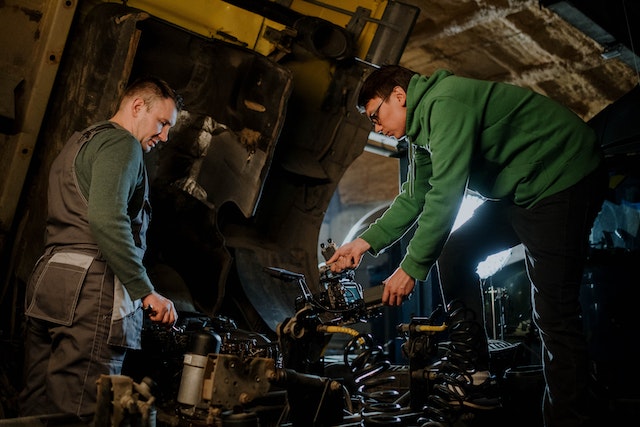Manufacturing is a complex and intricate process. Companies strive to increase efficiency and reduce line downtime. Line downtime is when a production line stops working due to a malfunction or a lack of raw materials. It can be costly for manufacturers in terms of time and money.
In this article, we’ll explore five ways manufacturers can reduce line downtime and keep their production lines running like clockwork. Let’s see what they are.
1. Investing in The Right Equipment
Manufacturers should invest in quality equipment that is designed to reduce line downtime. High-quality machinery can improve efficiency and reduce the risk of malfunctions or breakdowns. This can include investing in reliable machinery, well-maintained equipment, and automation systems.
Automation systems can automate certain processes and help reduce line downtime by removing the need for manual labor. In processes where laborers may work at different speeds, take breaks, or undergo short shift changes, automation can help maintain a consistent flow of production.
2. Scheduling Regular Maintenance
Scheduling regular maintenance is essential for reducing line downtime. Manufacturers should create a schedule outlining when certain machines or processes must be serviced. This will help identify issues before they become a problem so manufacturing lines remain up and running at all times.
Regular maintenance can also help manufacturers identify areas that could be improved to increase efficiency and reduce downtime even further. It can also help manufacturers identify any potential problems with their production lines, allowing them to make repairs or adjustments quickly and efficiently. This ensures that machines are in good shape and helps keep production running smoothly https://industrytoday.com/5-tips-for-reducing-downtime-on-production-lines/.
3. Training Staff
Training staff on the proper use of machinery and processes is essential for reducing line downtime. If workers are proficient in using the machines and identifying any potential problems, machine breakdown is much less likely to occur. Regular training sessions can also help staff stay updated on the latest technology and processes, allowing them to quickly and efficiently identify any issues.
Machine learning in the manufacturing industry can also help keep machines running smoothly by providing real-time data and insights that can be used to identify problems and make improvements. This can help manufacturers make better decisions and reduce the risk of line downtime. It can help keep staff safe and reduce the risk of accidents or injuries.
4. Implementing Lean Manufacturing
Implementing lean manufacturing techniques can help reduce line downtime. Lean manufacturing focuses on eliminating waste and reducing complexity, which can help streamline processes and make them more efficient. This can include implementing just-in-time production systems, reducing inventory levels, and introducing automation to reduce labor costs.
By implementing lean manufacturing techniques, companies can reduce the time it takes to produce a product. This can help increase production output and improve overall efficiency. Additionally, it can help companies save money by reducing labor costs and inventory levels. It can also minimize the time required to complete each task, reducing the risk and overall impact of unnecessary delays.
5. Utilizing Preventive Maintenance
Preventive maintenance can reduce line downtime by proactively identifying and addressing potential problems. This involves regularly inspecting the equipment of machines to identify any potential issues that could result in a machine breaking down.
If any issues are found, they can be addressed before they cause major problems. Additionally, preventive maintenance can help ensure that machines are running at optimal performance levels and help reduce the risk of breakdowns or failures. This can help improve production output and reduce costs associated with repairs.
By addressing these issues early, companies can avoid costly repairs or replacements, which can help reduce unplanned halts in production and increase efficiency. Additionally, preventive maintenance can help extend the lifespan of machines, further reducing the risk of unexpected delays or repairs https://www.dataparc.com/blog/5-effective-ways-to-reduce-downtime-in-manufacturing/.
Conclusion
Manufacturers should take proactive steps to reduce line downtime by utilizing preventive maintenance and other proactive strategies. This can help reduce the risk of costly repairs or replacements, increase production efficiency, and extend the lifespan of machines.
Additionally, it can help ensure that machines are running at optimal performance levels, eliminating the chance of unexpected delays. By taking these steps, manufacturers can ensure that their lines remain productive and efficient.




















![TamilMV Proxy List Top 30+ [Unblock TamilMV Sites] TamilMV Proxy Unblock](https://technewsgather.com/wp-content/uploads/2023/04/17825836_SL-121019-25870-14-1-100x70.jpg)